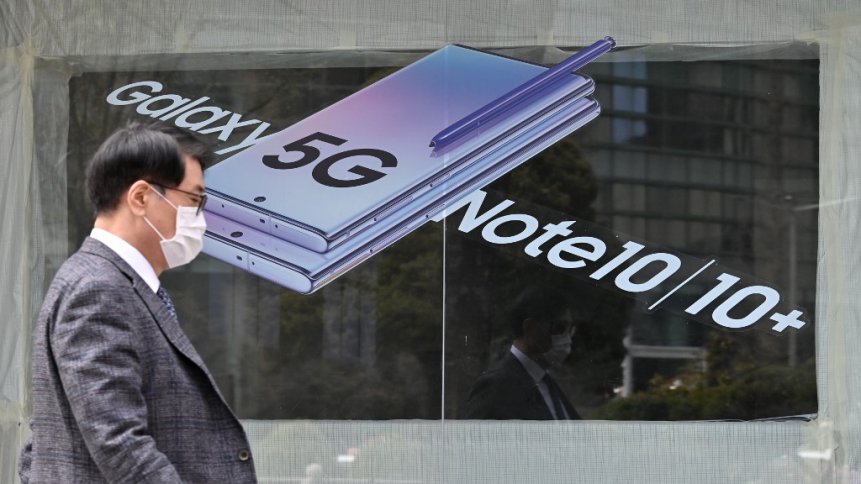Why the future of 5G in Europe faces a fragmentation challenge

- 5G initiatives around the world have been set back by the global pandemic
- But across borders in Europe, fragmentation between countries could hamper adoption
- DIGITALEUROPE’s director general urges nation’s leaders to consider continent’s needs “as one”
It often seems like 5G is an evolving international battleground, but the disruption caused by COVID-19 is universal.
Like other industries, some of which have actually come to more-or-less of a standstill, 5G has suffered setbacks related to upset supply chains and logistics systems, largely caused by government-imposed social distancing measures.
Telecom giants are set on ensuring 2020 will not be a “lost year” in their gameplan. While network operators’ service plans will need to be reevaluated, the market continues to grow, and can even support the technological initiatives in tackling the virus.
Strategy Analytics tracked 15 5G commercial network launches since the beginning of the year – several even as the pandemic began to take hold.
Signs of its continuity are also present in wholly non-scientific conspiracy theories that 5G development itself is even responsible for coranvirus’s symptoms – those unfounded concerns have even led to cell towers being set on fire across Europe.
In the continent (aside from those more surrealist, short-term challenges just mentioned) Chinese telecoms giant and 5G leader Huawei said even its limited deployment of 5G technologies across Europe will “certainly be delayed” as a result of the disruption caused by the outbreak.
It warned that setbacks could continue for an indeterminable amount of time, up until the point “when the pandemic is brought under control.”
Europe has been hit particularly hard by the coronavirus and 5G progress could take an even further step back as a result. In Spain, for example, one of the worst affected countries worldwide, 5G auctions have been put on hold entirely, with no new date yet set for the allocation of 700MHz frequencies in the months to come.
Unified with 5G?
But as Europe, like much of the world, faces these immediate challenges in 5G deployment, TechHQ sought to find how the continent is tracking in its progress with the cellular networking technology more generally, and turned to Cecilia Bonefeld-Dahl to do so, the Director General of DIGITALEUROPE – the leading trade association representing digitally transforming industries in Europe.
DIGITALEUROPE is pushing for 5G connections to cover 40 percent of the workforce, 70 percent of European industrial sites, and 80 percent of main logistics routes by 2025. It’s certainly an ambitious, though achievable target.
But, aside from the current coronavirus situation, ‘disparity’ seems to be a pervasive theme in Europe’s progress towards 5G development and adoption.
“It’s true that, even though we have various European institutions like the EU and also telecoms organisations like the European Conference of Postal and Telecommunications Administrations [CEPT], each member state is going at its own pace,” said Bonefeld-Dahl.
YOU MIGHT LIKE

Pandemic will illuminate where 5G can transform our work
A consequence of “historical and geographical reasons” and “telecoms markets that are still very much country-focused,” this disparity hampers the investment market, she explained, and therefore the ability to scale and innovate, and the future possibilities for European players to compete globally.
Each country, of course, has its own culture and government, which manifests in varying understandings of digitization and technology across the continent, which in turn, translates to different readiness-levels when it comes to 5G adoption.
DIGITALEUROPE, for example, is encouraging governments to invest more into digital skills, so that students but also small business owners know basic coding and overcome the “fear”, to understand how they could adapt and upgrade their businesses with technology like 5G – and there will be huge potential here. From more game-changing potential, like enabling remote medicine, or the remote operation of machinery. For smaller businesses, simply faster, more reliable and more ubiquitous network coverage and online access could be transformative.
“Just look at the amount of people working from home or on the go, for all manner of businesses, that would benefit from having better mobile internet connection to stream video conference calls,” Bonefeld-Dahl said.
But fragmentation also comes with various regulations across borders, making scale and expansion for telecoms firms a quagmire; “[…] having to deal with a multitude of application procedures and permits to install 5G equipment needlessly jumps up the deployment cost.
“In the US they have a handful of operators, in the EU, we have over 70,” Bonefeld-Dahl said.
Of course, the current pandemic is not going to help resolve a technically-unified approach to 5G infrastructure across Europe, but it is certainly highlighting a unified recognition that digital infrastructure is essential to society, and in this sense it could benefit development in the longer term.
“[…] European national leaders need to collaborate and think of Europeans’ needs as one, not country by country.”









